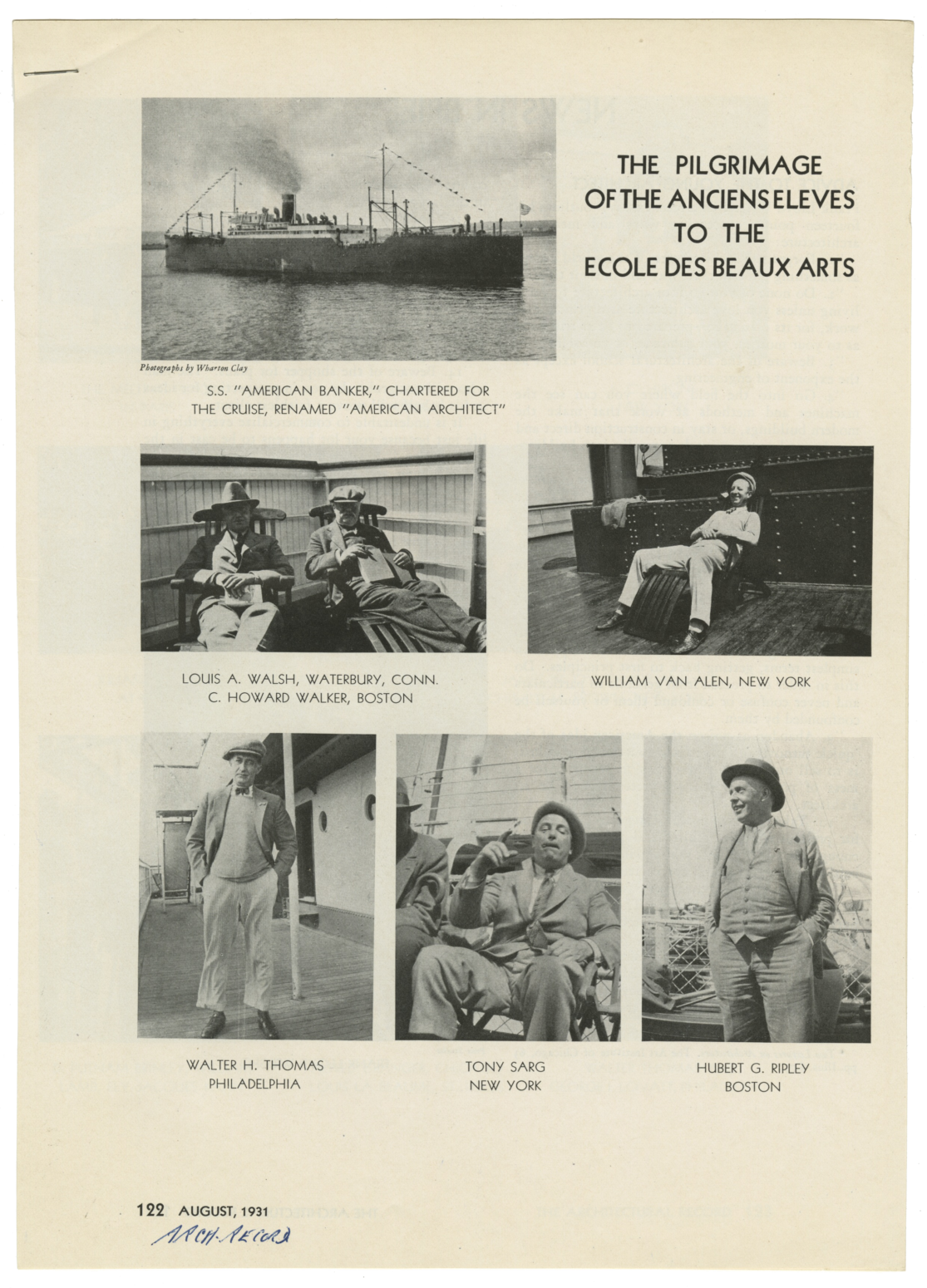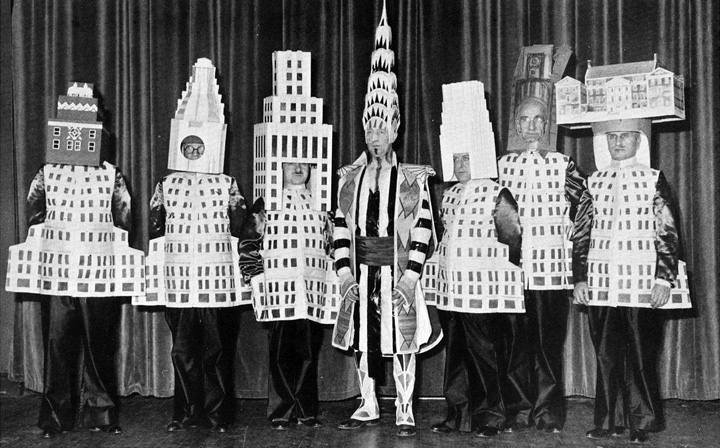The name sake of our organization is William Van Alen (1883-1954), the Brooklyn-born architect best known for his design of the Chrysler Building. Van Alen was one of the earliest Paris Prize winners and an active School of Beaux-Arts Architects (SBAA) member. While a student at the Pratt Institute he won the 1908 Paris Prize for his design for A Theater. His winning drawing can be seen in the collection of the Metropolitan Museum of Art.
While on fellowship leave in Paris, Van Alen worked in the atelier of Victor Laloux. He was exposed to applications of elaborate ornamentation upon innovative cast-iron frames, which would greatly influence his work for years to come. When Van Alen returned to New York in 1910, he set up shop with H. Craig Severance. In 1928, he was hired for his most recognizable commission — the Chrysler Building, an art-deco skyscraper that was briefly the world’s tallest building.
In 1995, the National Institute of Architectural Education (NIAE) was renamed in honor of Van Alen, who was survived by his wife Elizabeth following his death in 1954. His widow bequeathed half of the architect’s estate to the organization upon her death in 1970. The funds from the bequest were used to purchase a building on West 22nd street, where Van Alen’s offices still exist today.




